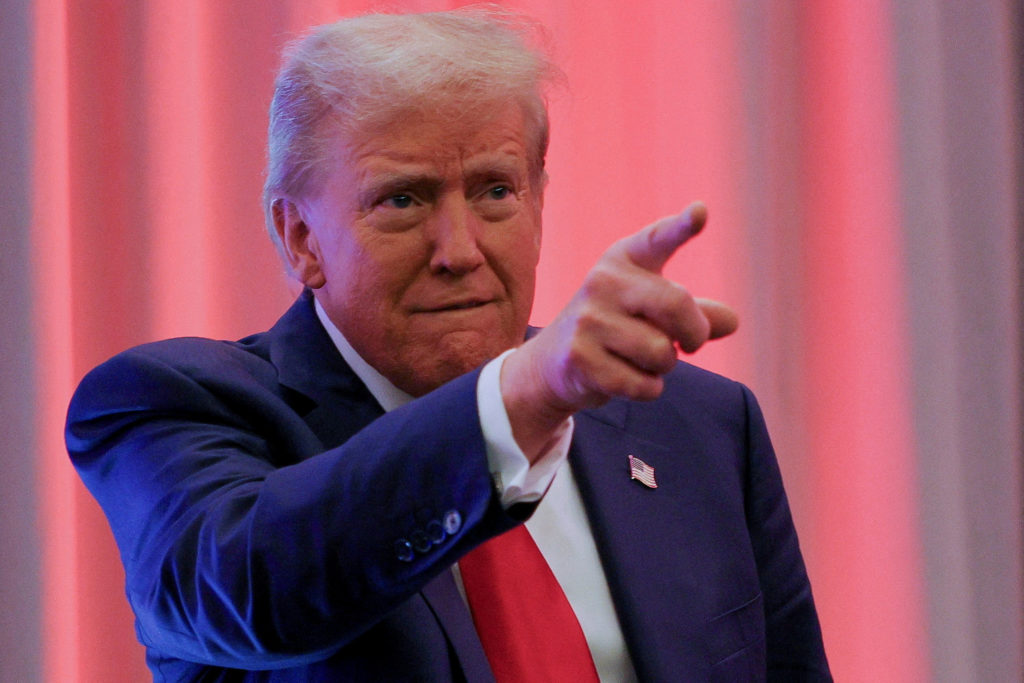What Fashion’s Advocacy Will Look Like in the Trump Era
As many brands back away from engaging in political and social issues to avoid a conservative backlash, this calculus may shift if Trump returns to the White House. Sitting in a Los Angeles hotel room during a photo shoot for his latest collection, Willy Chavarria, the 2024 CFDA Menswear Designer of the Year, is overcome with emotion as he reflects on how Donald Trump’s election has impacted his immigrant family.
Trump’s recent victory, coupled with strong support from young, diverse voters, has caused some within the fashion industry to question whether there’s a place for activism in the future of fashion. Brands were already hesitant to speak out after the Supreme Court’s 2023 reversal of affirmative action, which emboldened opposition to corporate diversity initiatives. Additionally, backlash from conservative groups targeting brands like Target and Bud Light for supporting LGBTQ rights revealed the financial risks of political statements.
However, the policies associated with a potential second Trump term—such as mass deportations, tariffs, and divisive stances on women’s, LGBTQ, and immigrant rights—could put increased pressure on fashion and beauty brands to re-enter the political conversation. Whether they choose to speak out or remain silent, experts suggest brands must be prepared to explain their decisions to consumers.
“We can learn from what happened during Trump’s first term,” said Adam Fetcher, a former Patagonia executive. Fetcher, along with Eric Raymond, co-founded Big Future, a brand agency helping companies navigate political engagement. “There will be flashpoints in the discourse, and brands need to focus on where their commitment lies—or risk becoming a negative flashpoint.”
Defining Advocacy in Fashion
Corporate social responsibility (CSR) and advocacy differ fundamentally. While CSR focuses on issues like fair wages and climate impact, true advocacy challenges brands to engage with causes and policies such as immigration, women’s rights, and education. “This could involve providing financial support, using creative platforms to raise awareness, or mobilizing people through calls to action,” Fetcher explained.
Fashion’s involvement in activism spans a wide range—Patagonia’s commitment to climate change through nonprofit ownership contrasts with luxury brands that avoid political stances altogether. Effective advocacy typically aligns with a brand’s core values and customer base. For example, Nike’s support of Black Lives Matter in 2016 resonated with its largely Black athlete endorsements. Similarly, makeup brands may focus on women’s rights, while companies serving ethnic minorities may advocate for Indigenous rights.
At Glossier, the focus on “equity, inclusion, and representation” reflects the company’s customer base of mostly women. Ahead of the 2024 election, Glossier placed an ad in The New York Times featuring a woman’s bare breasts and the message: “Vote for your daughter’s future, vote for your grandmother’s legacy,” pointing directly at Trump’s anti-abortion stance. The brand also continued its support for organizations like Ignite National and Reproductive Freedom for All, and expanded its Glossier Grant Programme, which funds Black-founded brands.
Chavarria’s own brand has been an advocate for immigrant and LGBTQ rights, donating proceeds to the ACLU and using his New York Fashion Week shows to address these causes. He intends to continue these efforts more strongly in the coming years. “In fashion right now, there isn’t room to be frivolous and ignore what’s going on,” he said. “It’s just inexcusable.”
Planning Advocacy in the Trump Era
Under a second Trump administration, some brand experts anticipate a renewed demand for corporate action, similar to the backlash over the 2017 “Muslim ban.” Brands with no history of advocacy could be caught off guard if demands for social action increase.
For companies unaccustomed to advocacy, the time leading up to Trump’s inauguration offers a window to begin aligning with public good. “The murder of George Floyd and the Black Lives Matter protests showed companies scrambling to figure out how they could contribute,” said Fetcher. “Now is the time to establish a track record of meaningful action.”
Brands should focus on one or two issues that resonate with their employees and customers, according to Scott Markman, founder of MonogramGroup. Collaborations with nonprofits, employee volunteerism, and grassroots partnerships are ways to make an impact. “Don’t be opportunistic,” said Mark Lipton, professor at Parsons School of Design. “This is not a time for rushing. Instead, deeply reflect on what your vision says about what you stand for.”
Traditionally, issues like education, environmental safety, and public health have been safe for brands to support, but more polarizing topics such as police reform and immigration may become more contentious under Trump. However, brands like Nike and Patagonia have embraced these issues, aligning them with their core ethos, which resonated with both their employees and customers.
“There’s a difference between lukewarm support and measured advocacy,” Markman said.
Some brands may decide that activism is unlikely to resurge and may remain silent unless the need to take a stand becomes unavoidable. However, failing to plan may leave these companies unprepared when calls for action arise. At the same time, staying silent could result in consumers expecting less input from these brands, regardless of the severity of the situation.
Despite these risks, experts agree that brands should be prepared for activism’s potential resurgence. Fashion and beauty companies should consider pre-emptively developing content that addresses relevant issues for their customers and employees, ensuring it is authentic and includes those directly impacted by the issues.
“This isn’t a time for brands to stay silent,” said Glossier’s Shariat. “The question is not, ‘Is it our place?’ It’s, ‘Can we make an impact? Where and how?’”



